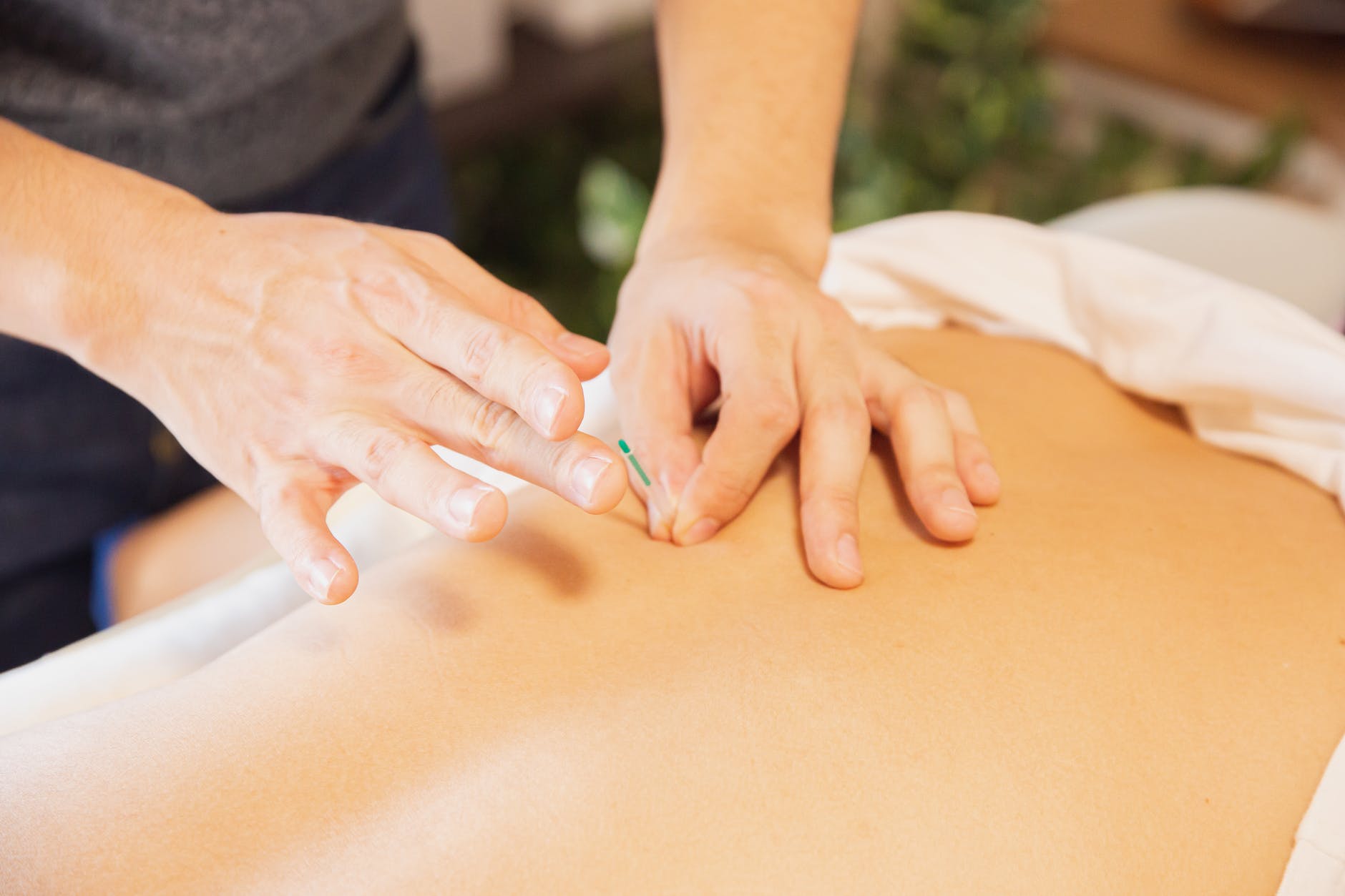Acupuncture is a drug-free treatment method that helps relieve pains and improve health conditions. It is of different types and makes use of needles that are inserted into acupuncture points (Acupoints).
Dry needling on the other hand is not an exact contrast of acupuncture but a style and variant of it. However, the acupuncture dry needling focuses on needling the muscles based on the biological human anatomy to improve health conditions, which is unlike traditional acupuncture that looks at the acupoints.
What is Dry Needling?
Dry needling is a style of traditional acupuncture that incorporates myofascial trigger point release of muscles rather than acupuncture points. In some cases, the muscle trigger point in dry needling corresponds with the acupoints in traditional acupuncture. Dry needling is also known as Intramuscular Stimulation (IMS).
Furthermore, it is referred to as ‘dry’ needling because the process makes use of solid and blunt needles that do not contain any fluid, that is, nothing is injected into the body with the needle. Dry needles are the direct opposite of wet needles also called hypodermic needles.
Dry needling is known to help with pains, migraines, joint dysfunction, lower back pains, and sciatica. This treatment method is used by therapists and allows for precise targeting of the tissue concerning pains, illness, and health conditions. It does the work that acupuncture does not since it reaches deeper into the tissue. In other words, dry needling does better in treating specific conditions.
Is dry needling different from acupuncture?
Dry needling is a technique in acupuncture that helps with muscle stimulation using the needle. The tools used for dry needling and acupuncture are the same – acupuncture needles. The differing factors are the technique used, theory implored, philosophy, beliefs, amount of training required to be a professional, and the position/depth of the needles.
Technique
Dry needling aims at strongly stimulating the muscles, by targeting deep tissues, to loosen them and enhance proper blood flow. This is done by poking a muscle that is tight or shortened with the acupuncture needle. In the process, these muscles contract involuntarily to restore proper functioning, relieve pains and increase blood flow. On the other hand, acupuncture does not use strong stimulation.
Theory
Acupuncture is an ancient Chinese practice that has been improved over time. It, therefore, is based on certain Chinese principles and traditional Chinese medicine. However, dry needling is an improved and researched aspect of acupuncture and is only tagged acupuncture because it makes use of acupuncture needles. Dry needling advocates that it is not necessary to inject any substance to relieve pains to a muscle or pain trigger point.
Philosophy and Beliefs
Acupuncture, we know, is ancient and has been in existence for over 2000 years now. It is based on Traditional Chinese medicine and it aims at improving the body’s energy which it calls “qi”. The qi is a force/energy that flows through paths of the body which are not anatomical structures but some old tales, traditions, and spiritual mantras.
However, dry needling is western and is more scientifically evidence-based than acupuncture. It takes into consideration body anatomy, neuromuscular diagnosis, and physiology.
Training required
An acupuncturist would have studied and gone through almost about twice the amount of training required to administer as a professional when compared with dry needling. Although this varies from place to place and institution to institution, generally speaking, acupuncture requires more training than dry needling. Perhaps because dry needling is just an aspect of the whole acupuncture.
Position of needles
This factor is considered the major difference between acupuncture and dry needling. In acupuncture, needles are placed in specific locations to treat the particular/target illness or pain.
On the other hand, dry needling does not have a specific location for specific illness/pain. The position of needles varies depending on the patient’s complaint, symptoms, the pain felt, and intensity.
Furthermore, needles at their locations, depending on the treatment type, go into the skin/muscle at different depths. Traditional Chinese acupuncture places the needles on the surface with a depth ranging from 0.12 to 0.40 inches. However, these needles stay much longer than dry needling does. Dry needling goes deeper into the tissue to a depth of 2.00 to 4.00 inches.
The benefits of dry needling
Reduces pains
Dry needling targets trigger points with great specificity, hence, it is an effective way to reduce pains and relieve muscle tightness. Pains are known to occur away from their trigger points, dry needling pays great attention to the trigger point (the root of the problem), then the effect of the pains.
Speeds up the recovery process
Since pain relief is quicker with dry needling, the recovery process becomes improved and hastened consequently. Even in cases of injury, dry needling works and gets you back to full strength.
Improves movement and flexibility
Note that dry needling is not only used when healing is in view. Dry needling can be a form of relaxation and kick into normal functioning again even in the absence of sickness. For active sports lovers, staying flexible and having control over your body movement is very important – dry needling can help you achieve this. Dry needling will dissolve accumulated stress on joints, shoulders, and legs while helping you relax your muscles and enjoy great comfort.
Conclusion
Acupuncture and dry needling are both amazing alternative (medicine) treatment methods that bring benefits to patients. Usually, one of these is chosen based on the pain/illness to be treated, but some combine both based on preference. And although they differ in principle, theory, and philosophy, they also are alike since wholeness, wellness and a sound mind is the goal.
Dry needling helps improve health, reduce muscle pains/tension and normalize the dysfunction of body motors. It can be viewed as an evolved branch of traditional Chinese medicine or a modern western medical practice, either way, it is safe and holds a lot of benefits when administered by a trained professional.

